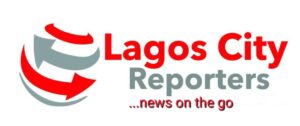IRCC has invited 500 healthcare workers under the new Express Entry category-based selection draws. Candidates required a minimum comprehensive ranking system (CRS) score of 476.
This is the very first category-based selection draw since the six new categories were announced on May 31. A second round, inviting 1,500 healthcare workers to apply, will take place on July 5.
A draw inviting eligible candidates from science, technology, engineering, and mathematics (STEM) professions is also expected to occur in the same week.
Healthcare occupations and category-based selection
On May 31, Immigration Refugees and Citizenship Canada (IRCC) announced that it had finalized new category-based selection for Express Entry.
Among the six new categories, healthcare occupations make up the largest number of eligible occupations, 35 in total:
- Audiologists and speech language pathologists
- Chiropractors
- Dentists
- Dieticians and nutritionists
- Education counsellors
- General practitioners and family physicians
- Instructors of persons with disabilities
- Kinesiologists and other professional occupation in therapy and assessment
- Licensed practical nurses
- Massage therapists
- Medical laboratory assistants and related technical occupations
- Medical laboratory technologists
- Medical radiation technologists
- Medical sonographers
- Nurse aides, orderlies and patient service associates
- Nurse practitioners
- Nursing coordinators and supervisors
- Occupational therapists
- Optometrists
- Other assisting occupations in support of health services
- Other practitioners of natural healing
- Other professional occupations in health diagnosing and treating
- Other technical occupations in therapy and assessment
- Paramedical occupations
- Pharmacy technical assistants and pharmacy assistants
- Physician assistants, midwives and allied health professionals
- Physiotherapists
- Psychologists
- Registered nurses and registered psychiatric nurses
- Respiratory therapists, clinical perfusionists and cardiopulmonary technologists
- Specialists in clinical and laboratory medicine
- Specialists in surgery
- Therapists in counselling and related specialized therapies
- Traditional Chinese medicine practitioners and acupuncturists
- Veterinarians
Other categories include:
- science, technology, engineering, and mathematics (STEM) professions
- trades, such as carpenters, plumbers and contractors
- transportation
- agriculture and agri-food
- strong French language proficiency
Healthcare worker shortage in Canada
Healthcare is one of the sectors experiencing a critical shortage of workers. This is in part because Canada has one of the lowest birth rates globally and an aging population. For example, it is estimated that nine million Canadians will reach retirement age, 65, within the next seven years.
An older population will create more demand on the healthcare system. Canada needs immigrants to make up for the shortfall of younger Canadians and fill these critical positions.
Recent job vacancy data from Statistics Canada shows that there were 144,500 vacant positions within the healthcare and social assistance sector as of March 2023, or 17.7% of all unfilled positions.
Several provinces and territories already hold draws for healthcare professionals through targeted streams of the Provincial Nominee Program (PNP). For example, Alberta recently launched a Designated Healthcare Pathway, under the Alberta Advantage Immigration Program, British Columbia invites healthcare professionals in nearly every BC PNP draw and Ontario recently invited 318 foreign workers in a healthcare occupation.
Category-based selection draws were anticipated to begin this year due to changes made to the Immigration and Refugee Protection Act in June 2022. The changes mean that Canada’s immigration minister may now select economic immigrants based on key attributes if they will support Canada’s economic priorities or promote French-speaking immigration to communities outside of Quebec.
The categories were chosen following discussions with provincial and territorial governments as well as other stakeholders who were able to help IRCC understand where the biggest labour force gaps exist.
Eligible candidates under the occupation-specific categories require at least 6 months of continuous work experience in one of the listed occupations, obtained within the past three years. This experience can be gained either in Canada or abroad.












Comments are closed